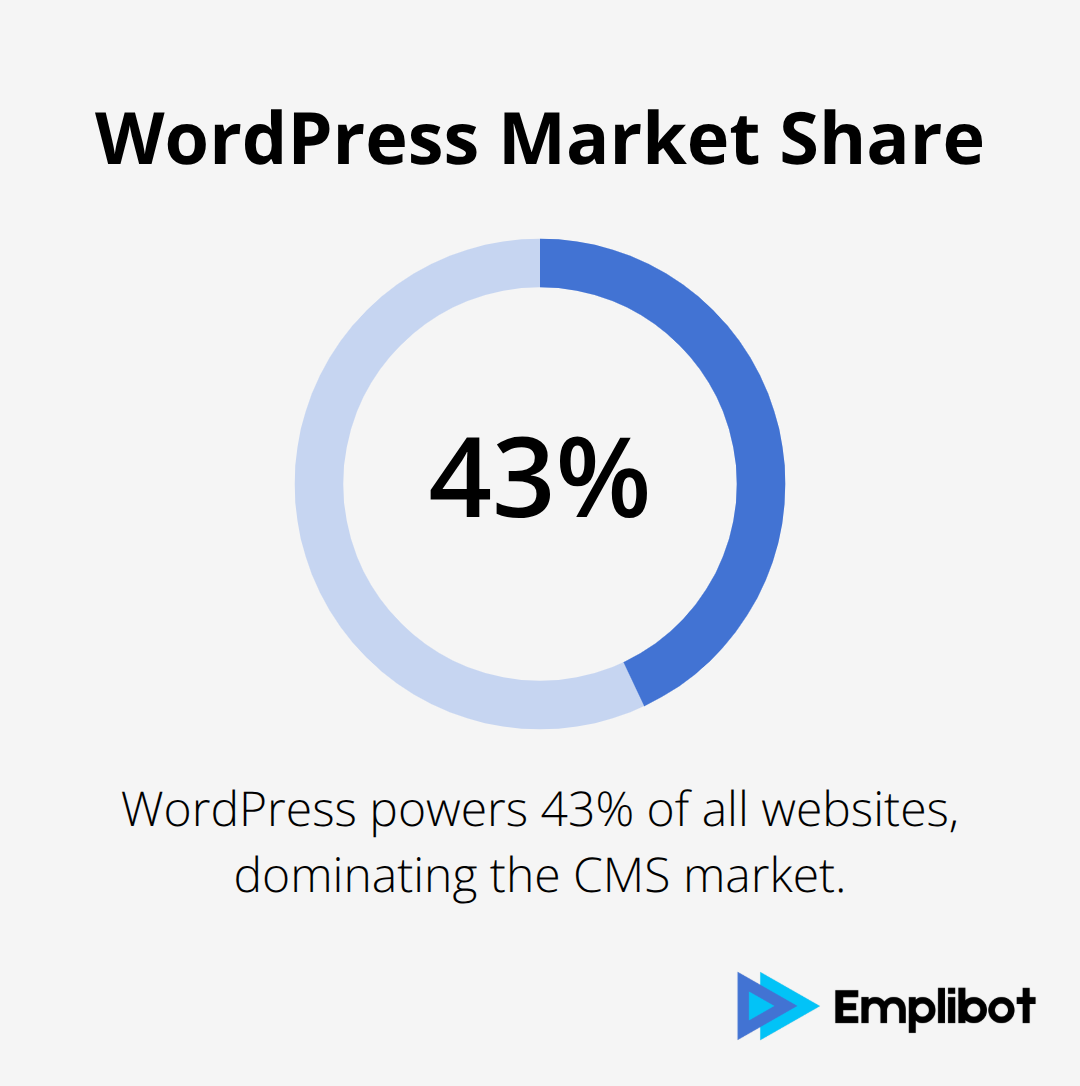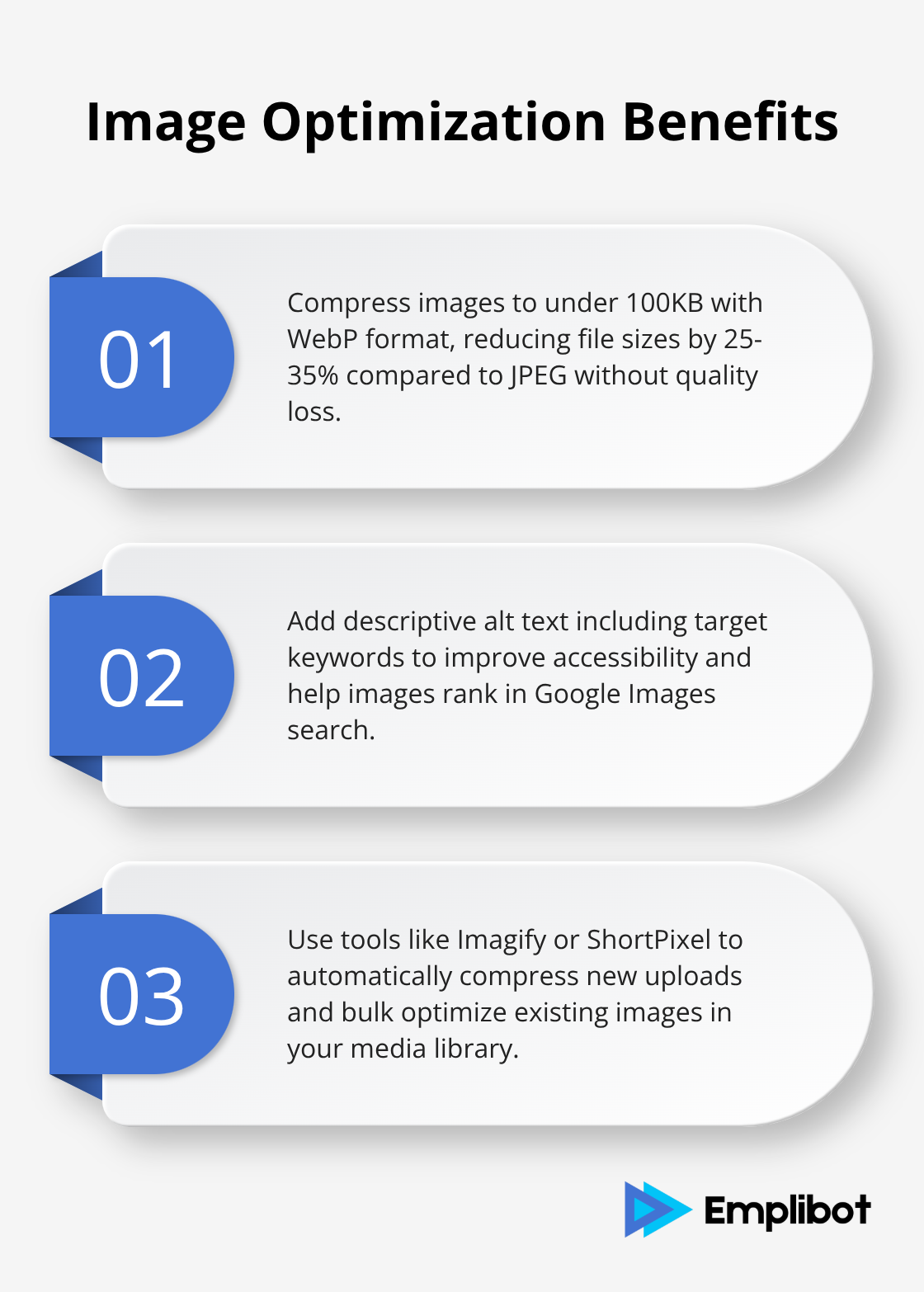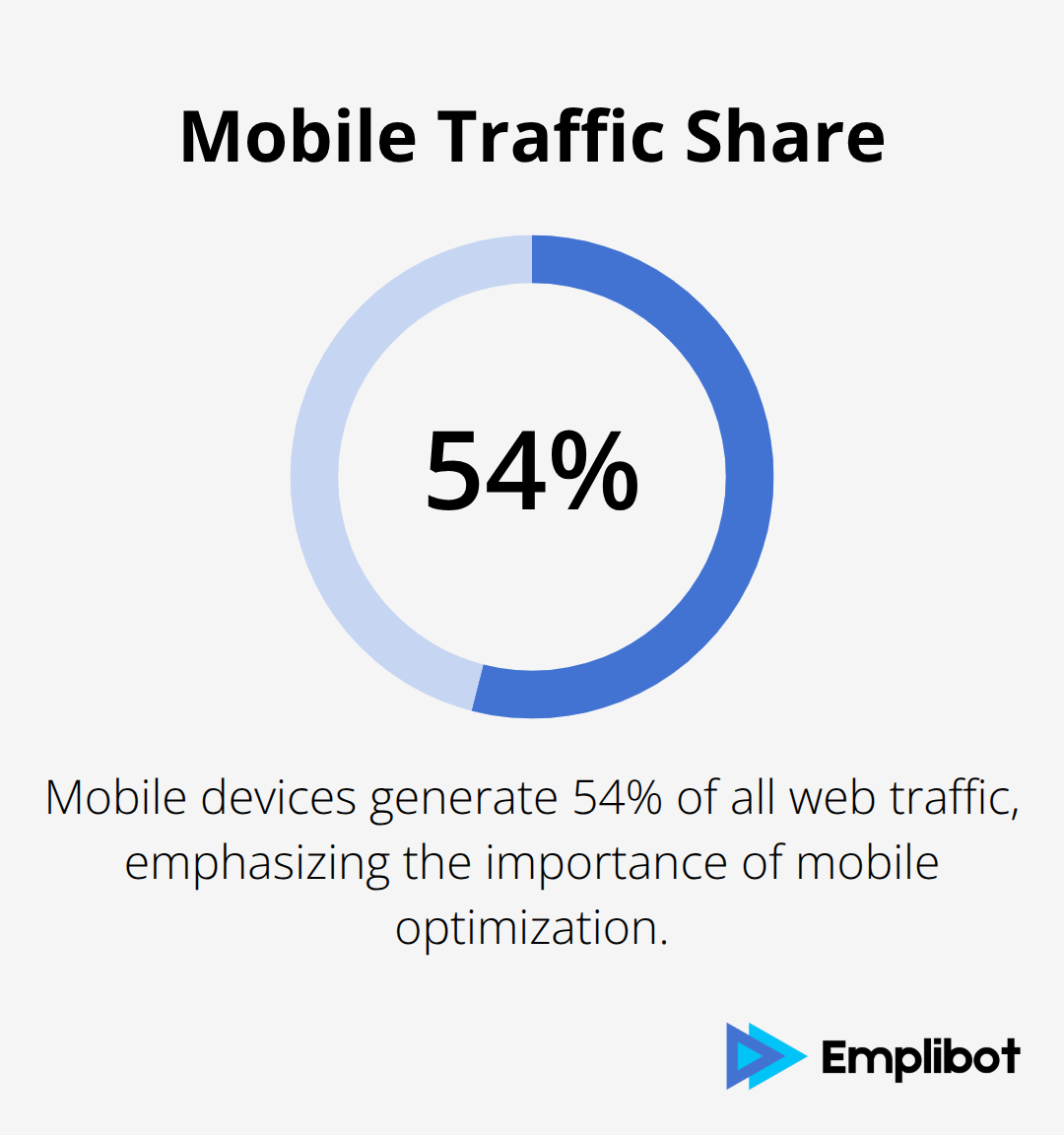WordPress powers 43% of all websites, yet most site owners miss basic SEO opportunities that could double their organic traffic.

We at Emplibot see this daily – simple optimization mistakes that cost businesses thousands of potential visitors. The good news is that you can improve WordPress SEO with proven techniques that take minutes to implement but deliver lasting results.
WordPress SEO Foundation Boosts Traffic by 100%
Your WordPress theme choice affects SEO rankings more than most people realize. Google’s Core Web Vitals update made site speed a direct ranking factor, and poorly coded themes slow your site by 3-4 seconds. Choose themes from reputable developers like Astra or GeneratePress that score above 90 on Google PageSpeed Insights. These themes load in under 2 seconds and include clean code that search engines crawl efficiently. Avoid themes with excessive animations, sliders, or bloated features you won’t use.
Site Speed Optimization Delivers Immediate Results
The average web page load time is 2.5 seconds on desktop and 8.6 seconds on mobile. Install WP Rocket caching plugin to reduce load times by 40-60% instantly. Compress images with Imagify to cut file sizes by 70% without quality loss. Choose SiteGround or WP Engine hosting providers that offer built-in caching and CDN services. These optimizations typically increase your Google PageSpeed score from 60 to 90+ within hours.
Essential SEO Plugin Setup Takes 15 Minutes
Install either Yoast SEO or RankMath plugin – never both simultaneously as they conflict. RankMath offers more features for free, including schema markup and keyword tracking for unlimited keywords. Yoast provides better content analysis but limits free users to one focus keyword per post. Both plugins handle XML sitemaps, meta descriptions, and title tag optimization automatically. Configure your chosen plugin’s settings once, then it optimizes every new post you publish without additional work.
SSL Certificate Installation Improves Rankings
Google treats HTTPS as a ranking factor, and sites without SSL certificates lose trust signals. Most hosting providers offer free SSL certificates through Let’s Encrypt. Activate HTTPS in your WordPress settings and redirect all HTTP traffic to HTTPS versions. This simple change can improve your search rankings within weeks and increases user trust in your site.
With your WordPress foundation solid, you can focus on optimizing individual pages and posts for maximum search visibility.
How to Optimize Pages for Maximum SEO Impact
Title tags drive click-through rates more than any other on-page element. Keep titles between 50-60 characters to avoid truncation in search results, and place your primary keyword within the first 8 words. Meta descriptions should span 150-160 characters and include your target keyword naturally while you compel users to click. Research shows that pages with optimized title tags see higher click-through rates than generic titles. Write unique titles and descriptions for every page – duplicate meta data confuses search engines and reduces your rankings. Test different variations with Google Search Console performance reports to identify which titles generate the most clicks for your content.
Header Structure Guides Search Engine Understanding
Use one H1 tag per page that matches your title tag keyword focus. Structure your content with H2 tags for main sections and H3 tags for subsections – this hierarchy helps Google understand your content organization. Internal links should connect 3-5 related pages within your site with descriptive anchor text that includes relevant keywords. Link to your most important pages from multiple locations to distribute authority effectively. WordPress plugins like Link Whisper automate internal link suggestions, but manual links provide better control over anchor text optimization.
Image Optimization Reduces Load Times and Improves Rankings
Compress images to under 100KB with WebP format, which reduces file sizes 25-35% compared to JPEG without quality loss. Add descriptive alt text that includes your target keyword when relevant – this improves accessibility and helps images rank in Google Images search. Name image files with keywords instead of generic names like IMG_001.jpg. Large images slow page speed significantly, and page speed is a direct ranking factor for SEO that affects rankings by increasing bounce rate and reducing dwell time. Use tools like Imagify or ShortPixel to automatically compress new uploads and bulk optimize existing images in your media library.

URL Structure Affects Search Rankings
Create short, descriptive URLs that include your primary keyword and avoid complex parameters or numbers. WordPress automatically generates URLs from your post titles, but you should edit them to remove stop words like “and,” “the,” or “of.” Keep URLs under 60 characters when possible and use hyphens to separate words rather than underscores. Clean URL structure helps both users and search engines understand your page content before they visit it.
These on-page optimizations work together with technical SEO elements to maximize your site’s search performance and user experience.
Advanced WordPress SEO That Drives More Traffic
Schema markup transforms search results with rich snippets that help search engines understand your content. Install Schema Pro plugin to add structured data for articles, products, reviews, and local businesses without code knowledge. Google Search Console shows which schema types appear in your search results – focus on FAQ schema for blog posts and Product schema for e-commerce pages. Test your markup with Google’s Rich Results Test tool to verify implementation. Most WordPress sites miss this opportunity despite schema taking just 10 minutes to configure per content type.
XML Sitemaps Speed Up Google Indexation
Generate XML sitemaps automatically with RankMath or Yoast SEO plugins, then submit them to Google Search Console within 24 hours of site launch. Exclude low-value pages like tags, archives, and thank-you pages from your sitemap to focus crawler attention on important content. Update your robots.txt file to reference your sitemap location and block search engines from admin areas, login pages, and duplicate content. Sites with optimized sitemaps get indexed faster than those without proper sitemap configuration.
Core Web Vitals Optimization Improves Rankings Immediately
Mobile traffic accounts for 54% of web traffic, which makes mobile optimization non-negotiable for SEO success. Install Google PageSpeed Insights Chrome extension to monitor Largest Contentful Paint, First Input Delay, and Cumulative Layout Shift scores directly in your browser. Lazy load images with plugins like a3 Lazy Load to improve load speeds on mobile devices. Remove render-block JavaScript and CSS files with WP Rocket’s file optimization features. Sites that score above 90 on Core Web Vitals rank higher in mobile search results, while sites below 50 lose significant organic traffic within months of Google algorithm updates.

Technical SEO Fixes That Boost Performance
Fix broken links immediately as they damage user experience and waste crawler budget (Google allocates limited time to crawl your site). Use AI SEO tools or Screaming Frog to identify 404 errors and implement 301 redirects to relevant pages. Enable GZIP compression through your hosting provider or caching plugin to reduce file transfer sizes significantly. Minify HTML, CSS, and JavaScript files to eliminate unnecessary characters and whitespace that slow page loads. These technical improvements often increase organic traffic within the first month of implementation.
Final Thoughts
WordPress SEO success depends on consistent implementation of proven strategies rather than complex technical tricks. Fast themes, caching plugins, and SSL certificates deliver immediate traffic improvements within weeks. On-page optimization through title tags, header structure, and image compression builds long-term organic growth that compounds monthly.
Advanced techniques like schema markup and Core Web Vitals optimization separate high-performing sites from average ones. Sites that implement these strategies see 100-280% traffic increases within six months (based on industry data from companies like Kinsta). You must treat SEO as an ongoing process rather than a one-time setup task.
Monitor your progress through Google Search Console and Google Analytics monthly to improve WordPress SEO effectively. Track keyword rankings, organic traffic growth, and page speed scores to identify areas that need attention. Consider automated content solutions that handle keyword research, content creation, and SEO optimization simultaneously for consistent results without manual effort.
![Improve WordPress SEO [Actionable Tips]](https://wp.emplibot.com/wp-content/uploads/emplibot/improve-wordpress-seo-hero-1759820876.jpeg)
